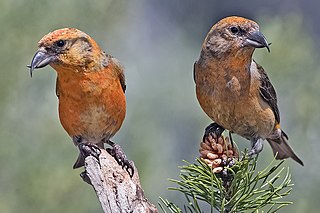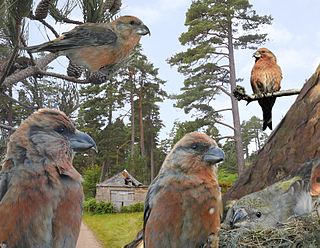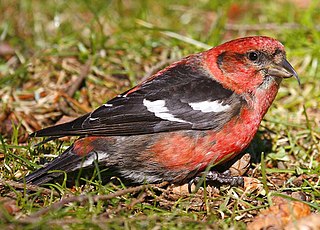 W
WThe crossbill is a genus, Loxia, of birds in the finch family (Fringillidae), with six species. These birds are characterised by the mandibles with crossed tips, which gives the group its English name. Adult males tend to be red or orange in colour, and females green or yellow, but there is much variation.
 W
WThe Cassia crossbill is a passerine bird in the family Fringillidae. It is endemic to the South Hills and Albion Mountains in southern Idaho. Cassia crossbill rarely interbreeds with other call types that move into the South Hills of Idaho yearly, and can be considered to represent a distinct species via ecological speciation. The Cassia crossbill have specialized beaks to access the seeds of the lodgepole pine cones in this region, but are poorly adapted to other pine cones in surrounding regions.
 W
WThe Hispaniolan crossbill is a crossbill that is endemic to the island of Hispaniola, and the only representative of the Loxia genus in the Caribbean.
 W
WThe Newfoundland red crossbill is a member of the crossbill genus which has its crossed bill adapted for prying open the tightly closed spruce or pine cones in order to extract the seeds found abundantly on the island of Newfoundland.
 W
WThe parrot crossbill is a small passerine bird in the finch family Fringillidae. It breeds in pine forests in northern and northeastern Europe.
 W
WThe red crossbill or common crossbill is a small passerine bird in the finch family Fringillidae. Crossbills have distinctive mandibles, crossed at the tips, which enable them to extract seeds from conifer cones and other fruits.
 W
WThe Scottish crossbill is a small passerine bird in the finch family Fringillidae. It is endemic to the Caledonian Forests of Scotland, and is the only terrestrial vertebrate species endemic to the United Kingdom. The Scottish crossbill was confirmed as a unique species in August 2006, on the basis of having a distinctive bird song.
 W
WThe two-barred crossbill or white-winged crossbill is a small passerine bird in the finch family Fringillidae.